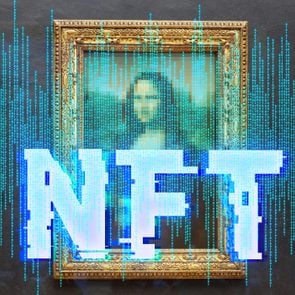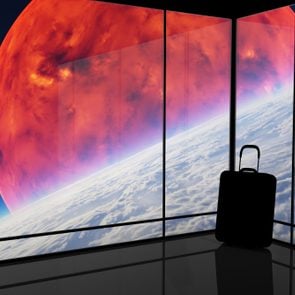How Robots Could Change the Future
Updated: Jun. 05, 2023
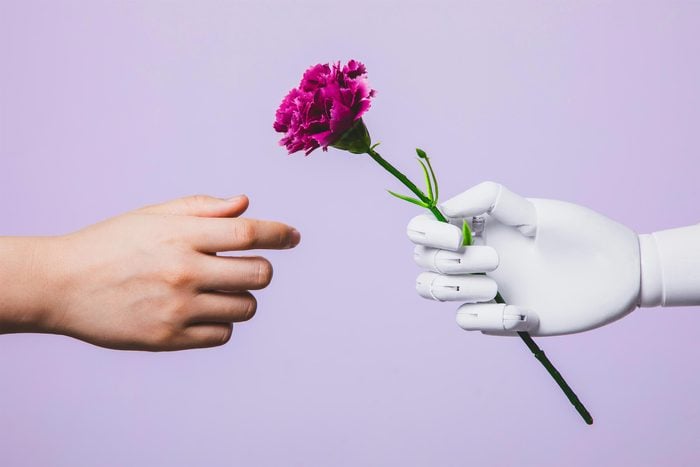
Discover what tomorrow may hold for the future of robots, drones and droids of all kinds
Look to your favorite sci-fi movie and you’ll get a good sense of how Hollywood sees robots of the future: Most communicate with us. Some even look like us. But the future of robots doesn’t just lie in more lifelike, human and helpful drones, droids and automatons, which we’ll increasingly encounter at every turn. It also lies in smaller, smarter and more self-aware high-tech helpers that will aid and assist with nearly every facet of everyday life.
Alone, robots designed for industrial purposes are projected to be a $35.68 billion market by 2029, per Fortune Business Insights. The market for medical robots is anticipated to trail closely behind. And other areas of robotics, such as self-driving delivery robots, aerospace robotics and hospitality robots, are poised to be billion-dollar sectors.
Like the metaverse (essentially a digital world), real robots will play a bigger role in our lives in the coming years, thanks to continuing advancements in robotics. Likewise, they’ll also continue to provide technological and productivity gains in an ever-growing assortment of industries. Artificial intelligence (AI) and the deep learning technology that powers robots—which attempts to mimic the human brain’s thought processes (hence AI’s ability to be biased)—will be ongoing game changers, says Martin Ford, author of Rule of the Robots: How Artificial Intelligence Will Transform Everything.
As he describes it, these advancements are poised to transform virtually every facet of the global economy. “In fact, the main argument in my book is that AI will eventually become so ubiquitous that it will evolve into a utility not unlike electricity,” Ford points out. “[It will be] a resource that can be easily and inexpensively deployed to solve almost any problem.”
What is a robot?
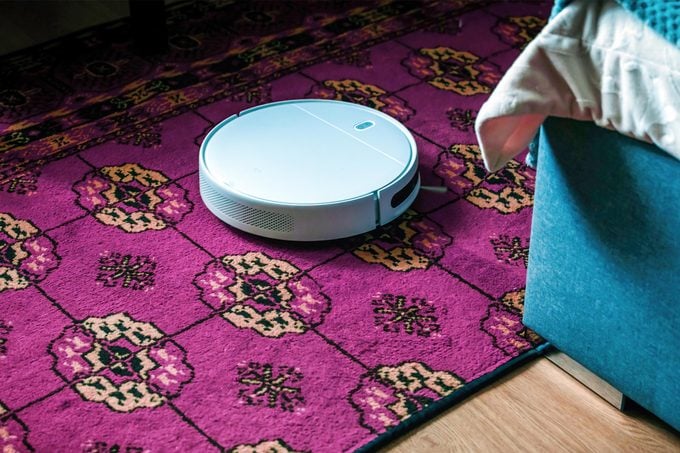
Before we take a closer look at what the future of robots holds, let’s start with a definition of “robot.” Any automatically operated machine that replaces human effort is a robot.
Robots can resemble human beings, but don’t necessarily have to, and are capable of taking on any appearance and performing all types of functions. Humans or computers can program them, but they can also possess their own AI software routines that allow them to ingest and process information, and make decisions, as a living creature might. Some are even capable of self-learning through machine learning, a type of technology that allows robots (or computers of any kind, really) to get smarter with and learn from each interaction.
While classic TV shows like The Jetsons and movies like Star Wars often conjure images of helpful robot maids and bleeping droids, real robots come in all shapes and sizes. In fact, you may already have adopted some in the form of interactive pets that you can play with or robot vacuums capable of self-navigating through your home.
Lest you think you’ll escape the robot revolution, experts suggest the machines will be ubiquitous in the coming years. Findings by Pew Research Center indicate that by 2025, AI and robotics will be integrated into nearly every aspect of most people’s daily lives. Marc Prensky, director of the Global Future Education Foundation and Institute, posits that within just a few years, the future of robotics and AI will include a world where robots are as omnipresent as cell phones. Nilofer Merchant, co-founder of The Intangible Labs, further suggests that most fundamentals of daily life, from grocery shopping to driving, will also be automated by this time.
Pros and cons of robots
As you might imagine, the future of robots holds potential upsides and downsides. Like many tools of technology, what we get out of robots will be a direct reflection of how we choose to use them. The following are just a few benefits and drawbacks of a reliance on robots.
Pros:
- Humans can offload and automate routine and time-consuming tasks.
- We can apply a machine’s strength, tenacity and tirelessness to completing objectives.
- Robots are capable of helping humans improve their mobility, reach, speed, productivity and performance.
- They may provide some users with a helpful source of communication and companionship.
- Robots offer greater precision and predictability in task performance.
Cons:
- Robots can make mistakes. They may be prone to technical failure, equipment glitches and/or software exploits, or high-tech hiccups like any piece of electronic equipment.
- They don’t always have similar cognitive, communication or creative skills as human beings.
- Robots aren’t necessarily as quick to grasp or accurate at parsing the subtle nuances of human interaction and conversation or the consequences of their actions.
- Many robotic devices still have yet to come down in terms of affordability, hindering widespread consumer adoption.
- They need regular servicing, maintenance, upgrades, retooling and repair.
The future of robots
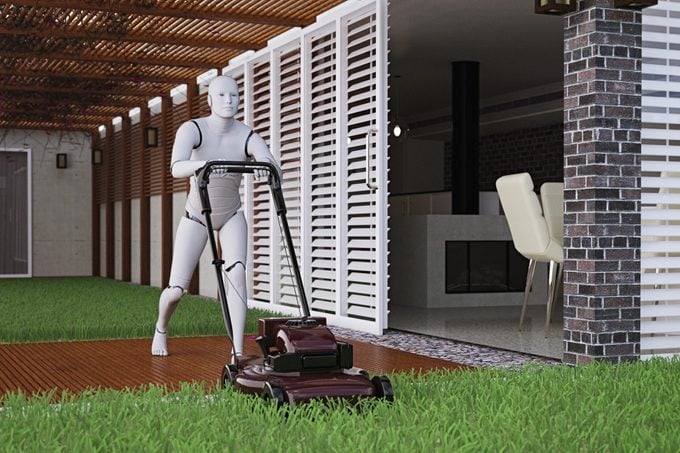
Experts expect robot technology to grow by leaps and bounds. We’ll see advances in robots’ ability to use natural language processing solutions, allowing them to process and interpret conversations more accurately. We’ll see major gains in AI and machine learning, with experts anticipating that more self-aware and self-learning devices will hit the market.
Computer vision, which empowers high-tech devices to spot, recognize and process still and video images as the human eye would, should also improve robotic performance. Droids of all kinds are also steadily enjoying access to better-performing self-navigation capabilities, requiring less input and guidance from humans to get around. Many companies, in fact, now offer the ability to train robots on digital simulations, allowing them to process millions of data points and improve their artificial intelligence and machine learning with each passing instance.
In other words, tomorrow’s robots won’t just think, act and respond more naturally. They’ll also enjoy quicker response times and better fine-motor skills.
Come 2050, interacting with robots of all kinds will feel like second nature, and we’ll increasingly encounter them at every turn. They’ll take on the role of bartenders, valets, chauffeurs and countless other professions. That’s before you consider their growing presence in the workplace as well, with warehouses and shipping centers increasingly being staffed by helpful droids.
Devices like robots that use AI and machine learning to boost productivity and performance are crucial to the workplace of the future, according to Ford. “Looking ahead, their importance to organizations [of any and all kinds] will only grow,” he says.
Those that are slow to adopt these new technologies and make the most of them are almost certain to fall behind competitively and decline in relevancy in coming years, Ford suggests. “In contrast,” he says, “those organizations that act now … have an opportunity to enjoy a significant first-mover advantage.”
What does this mean for humans?
It’s an almost certain bet that you’ll see more smart home technology—think robot vacuums, robot mops and automated lawnmowers—appearing in the next several years. You can expect to see more robots popping up around offices, on factory floors, in industrial centers and at retail outlets across the nation. That’s because robots are increasingly capable of helping lighten humans’ workload, don’t need lunch or rest breaks and are often capable of producing more predictable results with less downtime and error.
Mind you: This may mean that certain elements of today’s workforce, such as factory line workers who perform the same task repeatedly throughout the day, may find themselves in danger of being replaced by drones and droids. But that doesn’t mean humans are looking at a future of fewer jobs. Instead, the workforce will experience a shift.
We’ll need more skilled workers to program, maintain and operate all these robots, and we’ll need data scientists and researchers to help them process, analyze and interpret information. Overall, robots will take over for humans in performing dangerous, burdensome or redundant tasks. At the same time, they’ll also create new opportunities for those interested in making the most of this exciting new technology.
And don’t forget the many new and exciting applications for robotics: allowing a surgeon to use a remotely controlled arm to operate on a patient from thousands of miles away in real time, or helping an art teacher, using a similar device, instruct students in the art of drawing or painting using distance-learning solutions.
In effect, the future of robots will encompass all sorts of forward-looking developments, such as surgical robots and telehealth technologies, and all manner of innovations that help support companies in every field. Haven’t yet had a package delivered to your mailbox by a drone or a self-driving truck? The day is rapidly approaching when you will.
Will robots take over the world one day?
As exciting as AI-powered helpers like robots are, according to Citrix’s Work 2035 study, the answer is a resounding no. Robots and advanced technologies like artificial intelligence and machine learning will not replace humans. And AI isn’t poised to take over your job.
Rather, robots will serve as everyday partners in crime, making working with these high-tech solutions more of a collaboration than a takeover. In fact, robots are expected to make us smarter, more productive and increasingly efficient.
Moreover, robots can help make the work of myriad professionals and industries simpler, faster and more cost-efficient. In fact, today’s most advanced robots can do everything from sprint through rugged terrain, capturing data and information, to patrol for criminals like police dogs made of metal. (If you live in Massachusetts, you might also spot Boston Dynamics’s robot patrol dogs keeping police company.) Robots may soon play very prominent roles as household helpers, co-workers and even public security and education providers.
At the moment, the world’s most advanced robot appears to be a realistic humanoid known as Ameca, which can blink its eyes, smile and mimic human expression and interaction. Going forward, humans will continue to deploy humanlike robots in increasing numbers and with increasingly realistic stylings, though we’re still many years away from those that will be indistinguishable from real people.
Put simply: While the future of robots may not look exactly like R2-D2 or WALL-E, odds are that you’ll soon be welcoming them with open arms.
Robots, and the rise of the AI and machine-learning technologies that power them, represent the dawning of the next Industrial revolution, suggests Oren Etzioni, CEO of the Allen Institute for AI. As he points out, “The speed, power and breadth of [this] technology’s impact across society will be unprecedented.”
Sources:
- Martin Ford, author of Rule of the Robots: How Artificial Intelligence Will Transform Everything
- Oren Etzioni, CEO of the Allen Institute for AI
- Fortune Business Insights: “Industrial Robots Market Worth USD 35.68 Billion by 2029”
- The Insight Partners: “Medical Robots Market is expected to reach US$ 25,443.36 Million in 2028”
- Polaris Market Research: “Autonomous Delivery Robots Market Share, Size, Trends, Industry Analysis Report”
- Emergen Research: “Space Robotics Market Forecast to 2030”
- Allied Market Research: “Global Hospitality Robots Market Is Expected to Reach $3.08 Billion by 2030”
- Pew Research Center: “Predictions for the State of AI and Robotics in 2025”


